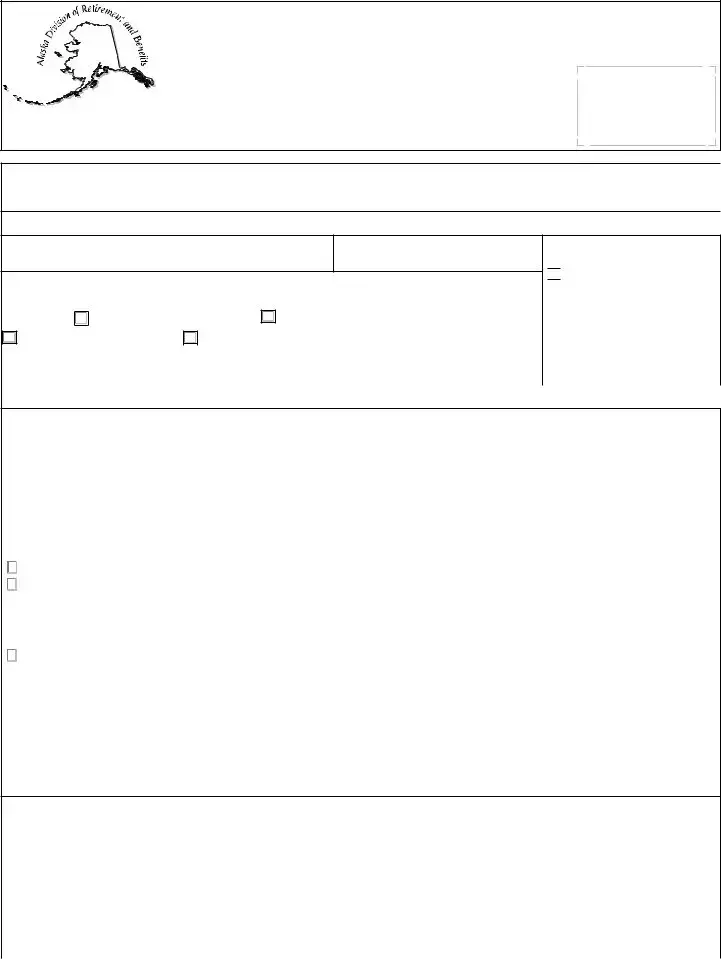The Alaska 02 1890 form, focusing on applications for retirement benefits within the National Guard and Naval Militia Retirement System, reflects various legal and administrative facets akin to other documents and forms prevalent in public service and military sectors. Let's explore similar documents and how they are related in function, purpose, or audience to the Alaska 02 1890 form.
Similar to the Alaska 02 1890 form is the Standard Form 3107, Application for Immediate Retirement for Federal Employees under the Civil Service Retirement System (CSRS). This document serves the federal civilian workforce, offering a structure for employees to apply for retirement benefits. Both documents necessitate detailed personal information and an explicit declaration of one's intention to retire, underscoring the bureaucratic process of transitioning from active employment to retirement status.
The DD Form 2656, Data for Payment of Retired Personnel, echoes the Alaska 02 1890 form in its utility for military personnel transitioning to retired life. This form is crucial for documenting a retiree’s preference for benefit distribution, similar to how the Alaska document outlines beneficiary designations and payment elections. Each form ensures that retirees’ benefits are allocated according to their wishes, be it through lump-sum payments or monthly distributions.
Another comparable document is the TSP-70, Request for Full Withdrawal from the Thrift Savings Plan, used by federal employees and military members to withdraw their retirement savings upon reaching eligibility. While the TSP-70 focuses on savings withdrawal rather than pension benefits, both it and the Alaska 02 1890 form address the financial planning aspects of retirement, offering multiple disbursement options to the applicant.
The Application for Social Security Retirement Benefits is a universally recognized form for individuals seeking to claim their Social Security benefits. This form shares the Alaska 02 1890's purpose in facilitating a key transition in an individual’s life, from active work to retirement. Both require personal identification and an understanding of one’s eligibility under the system they’re applying to, emphasizing the social contract between the individual and the institution.
Beneficiary designation forms, found in private sector retirement plans, have a direct correlation with the Alaska form’s section on beneficiary designation. These documents ensure that retirement assets are transferred per the account holder's wishes in the event of their demise, highlighting the importance of future planning for one’s dependents or preferred beneficiaries.
The Veterans Affairs (VA) Form 21P-527EZ, Application for Pension, is utilized by veterans applying for pension benefits. It mirrors the Alaska 02 1890 form's audience—service members—and its objective to secure financial stability in retirement. Both documents require a detailed account of service and personal information, recognizing the unique contributions of military members and veterans.
Public Employees' Retirement System (PERS) enrollment forms, employed by various states, share similarities with the Alaska 02 1890 form in their target audience—public servants. While differing in specifics, these forms initiate the process of accruing retirement benefits predicated on public service, emphasizing the value of such employment towards one’s retirement planning.
The IRS Form W-4P, Withholding Certificate for Pension or Annuity Payments, is related in its focus on the tax treatment of retirement payments. This form complements the Alaska 02 1890 by addressing the fiscal responsibilities retirees face on their distributed benefits, ensuring that retirees comply with tax laws while receiving their entitlements.
Lastly, the Application for Enrollment in Medicare (CMS-40B) ties to the Alaska 02 1890 form by recognizing another pivotal aspect of retirement planning—healthcare. While CMS-40B is specific to healthcare coverage, both forms are essential in the preparation for a secure and well-planned retirement, addressing different pillars of retirees' welfare.
In conclusion, the Alaska 02 1890 form shares commonalities with a wide array of documents across federal, state, and military domains, all designed to transition individuals into retirement with financial security and benefits reflective of their service and needs.


 I elect to defer my beneit.
I elect to defer my beneit.